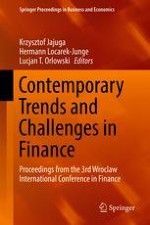2018 | OriginalPaper | Buchkapitel
Failure Models for Insolvency and Bankruptcy
verfasst von : Piotr Staszkiewicz, Bartosz Witkowski
Erschienen in: Contemporary Trends and Challenges in Finance
Aktivieren Sie unsere intelligente Suche, um passende Fachinhalte oder Patente zu finden.
Wählen Sie Textabschnitte aus um mit Künstlicher Intelligenz passenden Patente zu finden. powered by
Markieren Sie Textabschnitte, um KI-gestützt weitere passende Inhalte zu finden. powered by
